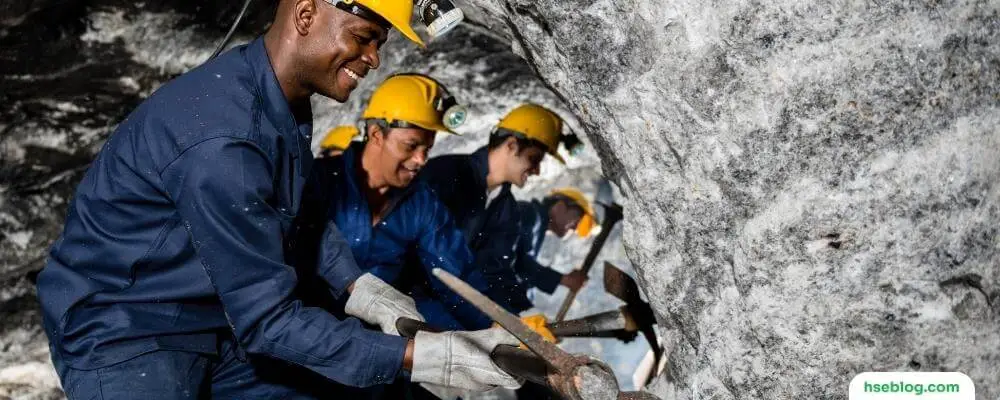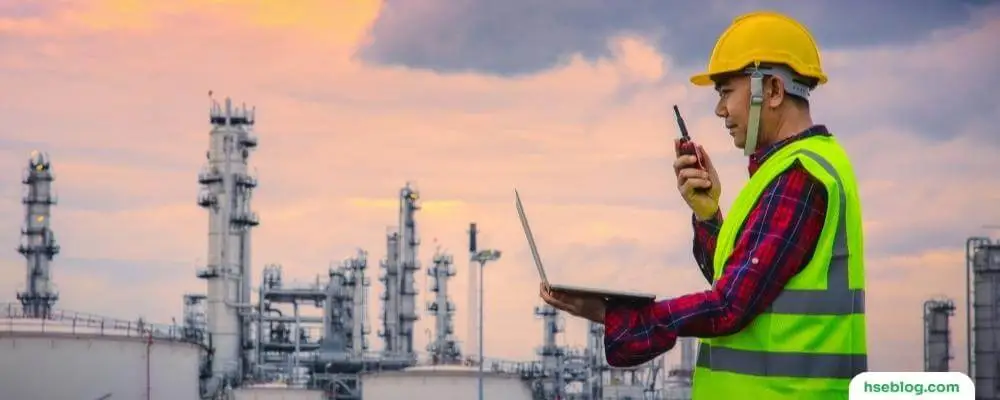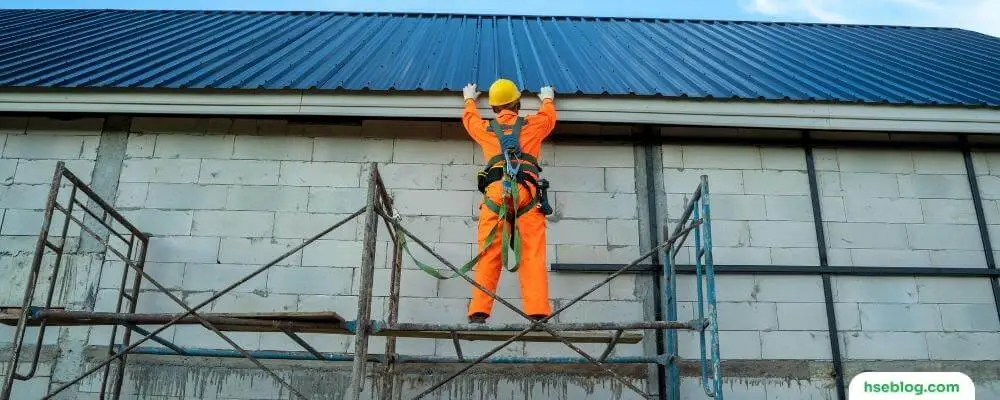Navigating through the complexities of the workplace, regardless of your profession or industry, entails understanding and respecting the importance of safety. Safety is not just a policy or a checklist of procedures; it is an integral part of daily work practices that can mean the difference between routine operation and potential injury or disaster. In this light, we bring you an insightful guide entitled “12 Life-Saving Rules to Follow at Work”.
This blog post aims to equip you with fundamental safety protocols that every professional should know, from laborers on a construction site to employees in an office setup. These rules aren’t merely beneficial; they’re life-saving, ensuring that you, your co-workers, and the overall work environment remain secure and productive.
As you read through these rules, you will find they are not complex or difficult to follow. However, their simplicity should not detract from their significance. Each rule contributes to creating a safer, more secure workplace for everyone, and it’s in everyone’s best interest to follow them to the letter.
We hope this guide provides you with a better understanding of workplace safety, helping you contribute to a healthier, safer, and more productive professional environment. Enjoy reading!
12 Life-Saving Rules to Follow at Work
There are many rules that we follow in our daily lives, which help to keep us safe. Some of these rules are so important that they can literally mean the difference between life and death. Here are a few examples of some of the most important life-saving rules everyone should know.
1. Work With A Valid Permit When Required
It’s crucial that you obtain and operate under a valid permit whenever it’s mandated, particularly when your work involves entering confined spaces. These permits are intended to ensure your safety by confirming that the area is secure for your work and that you have the right permissions. Always adhere to the safety protocols established for these areas. In case of any doubts or concerns, don’t hesitate to consult your supervisor or the designated authority. Following these measures ensures your personal safety and promotes a safer working environment. Secure your safety in confined workspaces begins with the right permit and following set safety procedures.
You can significantly minimize potential risks when operating within enclosed workspaces by obeying these instructions. Always ensure you’ve received the necessary permissions before entering such spaces, and stay committed to the associated safety practices. This approach can protect you from the hazards often associated with working in restricted environments.

2. Verify Isolation And Zero Energy Before Work Begins
Before initiating any tasks on a project, it’s crucial to ensure that the workspace is completely isolated and devoid of any energy sources. This process involves identifying and assessing potential energy sources, including electrical connections or gas pipelines. Once it’s been ascertained that all energy sources have been neutralized, then it’s safe for the work to proceed.
Adherence to a zero-energy environment is critical to the safety of all involved parties. Ensuring that all energy sources are effectively turned off mitigates the risk of accidents or injuries.
When you’re operating in an environment with possible energy sources, it’s imperative to take all necessary safety measures. Avoid presuming the safety of a space based on appearances. Always make a concerted effort to confirm the deactivation of all energy sources before commencing work. This proactive measure greatly enhances your safety and that of others in your work environment.
3. Obtain Authorization Before Overriding/Disabling Safety Controls
Gaining prior approval before altering or disabling any safety mechanisms is paramount. Negligence in this respect could lead to serious harm or even fatal accidents. Various circumstances may necessitate overriding or disabling safety controls. For instance, you might need to do so for equipment maintenance or to rectify an equipment malfunction.
Regardless of the situation, adherence to established procedures is key. Ensure you are fully aware of all associated risks before making any moves. Always seek approval from your supervisor before taking any such action. Adherence to these fundamental rules can significantly contribute to your and your coworkers’ safety. Ensuring proper authorization and understanding the risks help maintain a safer work environment.
4. Protect Yourself Against A Fall When Working At Height
When executing tasks at an elevated position, you need to take several measures to protect yourself against a potential fall. Begin by employing appropriate safety gear during your work, which includes harnesses, lanyards, and other essential personal protective equipment (PPE). Secondly, guarantee the area where you will work is secure before starting any tasks. This implies ensuring your ladder, scaffolding, or any other high platform has a stable base. Lastly, thoroughly inspect your equipment and work area before initiating work to identify any possible fall hazards. Following these safety practices can greatly help safeguard you against falls when operating at height.
Always remember to use suitable safety gear, such as harnesses, lanyards, and additional PPE, when working at elevated positions. Certify that your work area is adequately secured before you start any tasks. A comprehensive pre-work inspection of your equipment and workspace can help you spot potential hazards. By adhering to these safety practices, you are significantly reducing your risk of falling.
Certain actions can help lessen the impact and reduce injury risk in the unfortunate event of a fall. Firstly, aim to remain calm and relaxed, which helps prevent muscle tension that could exacerbate injuries. Secondly, tuck your chin in an attempt to roll onto your side to distribute the impact across your body. Lastly, call for assistance and avoid moving until emergency services arrive. Adhering to these guidelines can mitigate the injury risk if a fall occurs while operating at elevated heights.

5. Plan Lifting Operations And Control The Area
Lifting procedures can present significant hazards, hence necessitating meticulous planning and a comprehensive understanding of the potential risks. Ensure that you are well-versed in managing the lifting area and that all personnel involved in the operation are adequately trained.
As you design a lifting operation, certain key elements must be kept in consideration:
- The weight of the load to be lifted
- The nature of the load (for instance, unwieldy, delicate, etc.)
- The lifting gear that will be employed
- The number of workers involved in the process
All these factors can contribute to the risks inherent in lifting operations. Therefore, careful planning and ensuring that every participant is well-informed is paramount.
Lifting operations inherently carry risks, but through thoughtful planning and careful execution, these operations can be executed securely. Ascertain that you comprehend the risks involved and adopt the necessary preventive measures to maintain safety for everyone involved.
6. Follow The Rules For Working In Toxic Gas Environments
There are many ways to work safely in toxic gas environments. The most important thing is to follow the rules for working in these environments. Here are some tips to help you stay safe:
- Wear the proper personal protective equipment (PPE). This includes a respirator, gloves, and protective clothing.
- Ensure your PPE is properly fitted and you know how to use it correctly.
- Be aware of the signs and symptoms of exposure to toxic gases. These include headache, dizziness, nausea, and difficulty breathing.
- If you start to feel any of these symptoms, leave the area immediately and seek medical attention.
- Never enter an area that has been sealed off due to a toxic gas leak.
- Be sure to know the location of the nearest emergency shower and eye wash station.
- Always follow the safety procedures your employer has put in place.
Following these simple tips can help ensure your safety when working in toxic gas environments. Remember, safety is always the number one priority.
7. Follow Safe Driving Rules
It is always important to follow safe driving rules. This means abiding by the posted speed limit, using turn signals, and yielding to pedestrians. However, additional safety measures should be taken when driving in different weather conditions.
For example, rain can reduce visibility and make roads more slick. As a result, it is important to drive more slowly and allow for greater following distances. In addition, it is important to turn on your headlights so that other drivers can see you.
Snow and ice can also present challenges. Driving slowly and being especially careful when braking or turning is important. If possible, avoid driving in these conditions altogether. Generally, it is important to be extra cautious when driving in adverse weather conditions. Following these tips can help ensure a safe trip for yourself and others.
8. Keep Yourself And Others Out Of The Line Of Fire
If you’re in a situation with a lot of potential for conflict, keeping yourself and others out of the line of fire is important. Here are some tips for doing just that:
- Avoid getting caught up in the middle of arguments or disagreements. If you can, stay out of the room or area where the conflict occurs.
- Try to diffuse tense situations by staying calm and level-headed. This can be difficult, but it’s important to remember that you won’t be able to solve anything if you’re yelling or getting angry yourself.
- If you see someone who looks like they’re about to get involved in a conflict, see if you can talk to them beforehand and dissuade them from getting involved.
- In general, just try to be aware of potential conflicts and do your best to avoid them. It’s not always possible to completely avoid all conflicts, but it’s important to try.
Keeping yourself and others out of the line of fire can be difficult, but it’s important to try. By following the tips above, you’ll be better positioned to avoid potential conflict and keep everyone safe.

9. Control Flammables And Ignition Sources
Flammable substances and ignition sources are prevalent in many workplaces, necessitating vigilant control to prevent fire outbreaks.
Here are four principal strategies to manage these fire hazards:
- Eliminate the hazard
- Replace with less hazardous materials
- Segregate the hazard
- Implement engineering controls
Eliminating the hazard altogether is the most effective method. However, this is not always feasible. In such cases, the other three methods become imperative.
Substitution with less hazardous materials is often the next best choice. For instance, using propane instead of gasoline can decrease fire risks significantly. Segregating the hazard, the third option involves keeping the hazardous material isolated from other substances that could ignite.
The final strategy involves implementing engineering controls. This can range from installing efficient ventilation systems to using fire-resistant materials. Adhering to these four hazard control strategies can significantly diminish the potential of fire outbreaks at your workplace.
10. Wear the proper safety gear
Regardless of the nature of your occupation, it’s crucial to ensure that you are always equipped with suitable safety attire. This typically includes hard hats to protect against falling objects, safety glasses to shield your eyes from hazardous substances or particles, and steel-toed boots to guard your feet against heavy objects that could fall on them.
Depending on the nuances of your specific job role, there might be a requirement for additional safety gear. For instance, if you’re working in a loud environment, hearing protection like earmuffs or earplugs may be necessary to prevent potential hearing damage. If you’re exposed to certain airborne substances or engaged in activities that generate dust, a respirator might be required to protect your respiratory system.
Proper safety gear is crucial for providing protection should an accident occur, but it’s equally significant in proactively preventing accidents in the first place. For example, wearing safety glasses can prevent debris from getting into your eyes and causing a distraction that might lead to an accident. Similarly, a hard hat can protect you from head injuries that might otherwise incapacitate you, potentially leading to further accidents.
11. Pay attention to your surroundings
In the workplace, maintaining a keen awareness of your surroundings is paramount. This involves actively observing and registering elements within your work environment that could potentially cause harm. Such elements could range from wet floors that might cause slips, loose cables that could trip someone, or heavy objects precariously placed and potentially falling.
Observing your surroundings isn’t only about identifying immediate risks. It also involves an understanding of the activities happening around you. For instance, being aware of moving machinery, active work zones, or other employees performing potentially risky tasks is vital.
If you encounter a hazard or potentially dangerous situation, it’s essential to avoid the risk yourself and take action to prevent others from falling victim. This usually means reporting the issue to a supervisor or someone in charge who can address the problem appropriately. Reporting might involve explaining the nature of the hazard, its location, and any immediate risks associated with it.
Taking a proactive stance towards safety isn’t just about self-protection. It creates a safer, more secure working environment for everyone involved. By maintaining a high level of awareness and taking appropriate action when you notice potential dangers, you can help protect yourself and your co-workers.

12. Know how to use the equipment
In any work environment, whether you’re dealing with heavy machinery, power tools, or everyday office equipment, it’s paramount that you fully comprehend how to operate each piece of equipment you use. This rule applies across all industries, from construction sites to office settings.
Having a firm grasp on how to use your equipment doesn’t only involve understanding the basic functionality of the machine or tool. It also includes knowing the correct safety procedures, recognizing the potential risks associated with its use, and understanding how to respond if something goes wrong.
For instance, if you’re using power tools, you should be familiar with how to operate them safely, wear the correct protective equipment, and know what to do if a piece of equipment malfunctions. Similarly, suppose you’re using office equipment like a paper shredder. In that case, you must know how to operate it safely to avoid accidents, such as not overloading it and keeping your fingers away from the feed opening.
If you’re unsure about any aspect of the equipment you’re using, it’s vital to seek guidance from a supervisor or a knowledgeable colleague. Never try to operate equipment that you’re unfamiliar with without first gaining a proper understanding. Operating equipment with a lack of understanding places you at risk and can potentially harm others in the vicinity or cause damage to the equipment itself. Thus, comprehension of your equipment’s operation is a fundamental workplace safety and efficiency rule.
Conclusion
We’ve journeyed together through the “12 Life-Saving Rules to Follow at Work”, each highlighting key safety measures essential for any workplace. While these rules may seem simple and straightforward, their importance cannot be overstated. Together, they form a cohesive framework designed to preserve the well-being of everyone in the workplace.
Adhering to these rules is more than personal; it is a shared responsibility. A safer work environment benefits everyone involved, reducing potential injuries, boosting morale, and improving overall productivity. Remember, it’s not enough to understand these rules; their true value comes from consistent application and the conscious effort to make safety an ingrained part of your work ethic.
Keep these rules in mind as you move forward in your professional journey. Use them as guiding principles to navigate your work safely and efficiently. After all, a successful career isn’t just about achieving goals; it’s also about maintaining a work environment where everyone can thrive safely.
We hope that this guide has reinforced the importance of safety in your work practices, and we urge you to uphold these life-saving rules as a standard part of your professional routine. Stay safe and productive!

